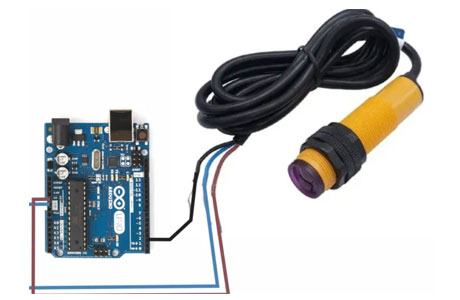Key Takeaway
A photoelectric sensor detects objects using a light transmitter and receiver. The transmitter emits light, often infrared, and the sensor detects the reflected light to determine an object’s presence or distance. These sensors are used in automation and safety systems.
An IR sensor detects infrared radiation emitted by objects. There are two types: active and passive. Active IR sensors emit and detect their own light, while passive IR sensors detect changes in infrared radiation. IR sensors are commonly used for motion detection and environmental monitoring.
The Basics of Photoelectric Sensors: Light Detection and Object Sensing
A photoelectric sensor detects objects by using a beam of light, usually from an LED. It works on the principle of emitting light and detecting the reflection or interruption of that light to determine if an object is present. These sensors are versatile and can detect even transparent objects like glass, making them highly reliable in various industrial settings.
In many manufacturing applications, the accuracy and range of photoelectric sensors are key reasons they are widely used. They are perfect for tasks where precision in detecting small objects is crucial, such as in conveyor systems or packaging lines.
The beauty of photoelectric sensors lies in their simplicity and effectiveness. They offer fast response times and are immune to interference from external factors like electromagnetic noise, making them perfect for a range of environments.

How Infrared Sensors Work: Heat and Proximity Detection
Infrared (IR) sensors function by detecting the heat emitted from objects or sensing their proximity. These sensors are categorized into two types: active and passive. Active IR sensors emit infrared light that reflects back when it encounters an object, allowing for proximity detection. Passive IR sensors, commonly found in security systems, detect the infrared radiation naturally given off by warm objects like humans.
One of the standout benefits of IR sensors is their ability to operate effectively in low-light conditions, as they rely on heat rather than visible light. However, their performance can be affected in environments with high ambient temperatures, which can confuse the sensor. In applications where heat or movement detection is essential, such as motion detectors or HVAC systems, IR sensors offer a reliable solution. Their ability to detect heat emissions makes them invaluable in monitoring and security systems.
Key Performance Differences in Sensing Capabilities
When comparing photoelectric sensors to infrared sensors, several key differences emerge. Photoelectric sensors generally offer superior range and accuracy, with some models capable of detecting objects over several meters. In contrast, infrared sensors tend to operate over shorter distances and are more suited for proximity detection. The trade-off is in the environmental adaptability—IR sensors struggle in heat-heavy environments, while photoelectric sensors can have issues with very dusty or foggy conditions.
Another point of distinction is their specific sensing mechanisms. Photoelectric sensors excel in industrial environments where precise object detection is needed, while IR sensors are more effective in scenarios requiring heat detection, such as temperature monitoring systems. Knowing the strengths of each sensor can help engineers make better decisions based on the application at hand.
Applications Where Photoelectric Sensors Are Better Suited
Photoelectric sensors are often the go-to solution in industries requiring high-speed, accurate object detection. For example, in automated manufacturing lines or packaging systems, these sensors are essential for detecting a wide variety of objects, from transparent materials to small, fast-moving items. Their versatility across different surfaces—whether shiny or dark—makes them ideal for demanding environments where precision is key.
These sensors are also customizable, offering different sensing modes like through-beam, reflective, or diffuse, which enhance their functionality. In the food, beverage, and pharmaceutical industries, photoelectric sensors play a critical role by ensuring that items on conveyor belts are detected accurately, even at high speeds. Their flexibility and reliability make them indispensable in many industrial applications.
When to Opt for Infrared Sensors Over Photoelectric Sensors
Infrared sensors carve out their own niche in certain applications where heat detection is more critical than object detection. If your goal is to measure temperature or detect motion, IR sensors offer a robust solution. For instance, passive infrared (PIR) sensors are commonly used in security systems to detect the presence of humans by sensing their body heat, a feature particularly useful in motion detectors.
IR sensors also prove their worth in low-light environments where traditional photoelectric sensors may struggle. In settings where detecting heat signatures is the priority—such as occupancy detection in HVAC systems—IR sensors outperform photoelectric options. Choosing the right sensor depends on the specific needs of the application, and in heat-sensitive environments, IR sensors offer a reliable alternative.
Conclusion
Choosing between a photoelectric sensor and an infrared sensor depends on your application needs. For high precision, long-range detection, and versatility in sensing various materials, a photoelectric sensor is ideal. On the other hand, if you’re focusing on detecting heat, motion, or proximity, especially in low-light environments, an infrared sensor is more suitable. Understanding these differences will help you choose the right sensor for optimizing efficiency and safety in industrial or security setups.
